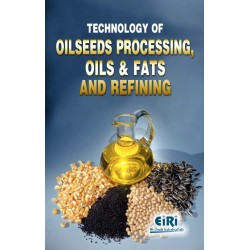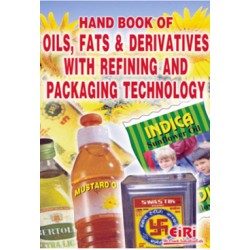Handbook of Oils, Fats and Derivatives - Methods, Formulations, Process and Technology
<p align="JUSTIFY">
<strong>Importance of Edible Oils in the Country’s Economy</strong><br />
<br />
Oilseeds and edible oils are two of the most sensitive essential commodities. India is one of the largest producers of oilseeds in the world and this sector occupies an important position in the agricultural economy and accounting for the estimated production of 28.21 million tonnes of nine cultivated oilseeds during the year 2007-08. India contributes about 6-7% of the world oilseeds production. Export of oilmeals, oilseeds and minor oils has increased from 5.06 million Tones in the financial year 2005-06 to 7.3 million tons in the financial year 2006-07. In terms of value, realization has gone up from Rs. 5514 crores to Rs.7997 crores. India accounted for about 6.4% of world oilmeal export.<br />
<br />
<strong>Types of Oils commonly in use in India</strong><br />
<br />
India is fortunate in having a wide range of oilseeds crops grown in its different agro climatic zones. Groundnut, mustard/rapeseed, sesame, safflower, linseed, nigerseed/castor are the major traditionally cultivated oilseeds. Soyabean and sunflower have also assumed importance in recent years. Coconut is most important amongst the plantation crops. Efforts are being made to grow oil palm in Andhra Pradesh, Karnataka, Tamil Nadu in addition to Kerala and Andaman & Nicobar Islands. Among the non-conventional oils, ricebran oil and cottonseed oil are the most important. In addition, oilseeds of tree and forest origin, which grow mostly in tribal inhabited areas, are also a significant source of oils.</p>
TECHNOLOGY OF OILSEEDS PROCESSING, OILS & FATS AND REFINING contains:
Chemical Constituents
of Fats
Fatty acids
Rules of Nomenclature
Numbering
Nomenclature
Symbols
Saturated Acids
Acids with an even number of carbon atoms
Acids with an odd..
₹ 1,500 INR ₹ 1,250 INR
Hand Book Of Oils, Fats And Derivativeswith Refining and Packaging Technology covers:
Product Introduction
Historical Oil Bearing Materials
Sesamum Indicum (Sesame)
Distribution
Seeds
Climate
Soil
Diseases
Seed
Oil
Gossypiu..
₹ 1,050 INR ₹ 850 INR
Showing 1 to 2 of 2 (1 Pages)


